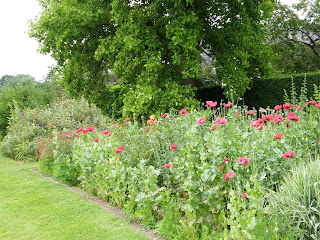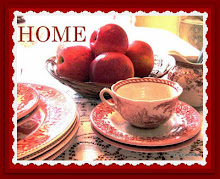
Gilbert White was born in Selborne, a small Hampshire village, in 1720 and he lived there for the whole of his life. He was a country curate and also a Fellow of Oriel College, Oxford. His claim to fame though is as the first real naturalist and his book The Illustrated Natural History of Selborne was originally published in 1789. It has never been out of print since and after the Bible, Shakespeare and Pilgrim's Progress it is the fourth most published work in the English language. This was my second visit to Selborne and on neither occasion have I had time to explore the village and the surrounding countryside properly but at some stage I want to do that. I found an interesting booklet with not only information about Gilbert White and his house but also the history of the rest of the village with a map! As I hope to spend some time looking round and taking photographs at some future date I have just included a few bits and pieces in this post.

This is a page from my copy of the book with a couple of the wonderful illustrations.They aren't the original ones but are hand coloured engravings by artists working at the same period of time. It is mostly a book about his observations of the birds,plants and animals that he saw but it also has bits and pieces about the local people and area and the weather - always a subject of interest to British people:)

This is the back of The Wakes, the house where he lived. It is so much altered and enlarged from when he knew it though that I haven't included any interiors from the guide book. As a building I find it very attractive - full of nooks and crannies, it would be an intriguing house to explore and I feel there would be every chance of the discovery of secret passages and hidden treasure:)

Not only was Gilbert White a naturalist but he was also a very keen gardener and the gardens are now more or less as he had them when he was alive and the plants grown are the ones he would have known. Close to the house are six large beds filled with old roses and both perennial and annual plants.

Happily there is also a 'plant sales' area so I didn't come away empty-handed!

There was a pretty little enclosed herb garden to one side, I would have liked to linger longer here but as I hadn't arrived until 3.30pm and it closed at 5pm I had to go at a fairly brisk pace in order to see both house and garden.

I don't know whether any of you have heard of a haha and wondered what it was - if so all will now be revealed. From the house side the wall is invisible and the fortunate owner has a clear view out over his parkland and/or the surrounding countryside. The wall however prevents any grazing animals - cattle, deer, sheep or whatever - from invading and ruining the garden. The lawn with the sundial is the bottom end of the one that can be seen in the photograph of the house above.

I took this simply because I thought that this small corner with the door made a really beautiful picture. The remaining photos below are of cottages around the village that appealed to me, there is no particular story attached to any of them.




I think the Tudor Stillroom will have to be delayed as we are going over to our seaside home for the week in the morning and there is no computer there. If the weather co-operates there will hopefully be another visit to the Lake District and a visit to the cottage where William Wordsworth lived. If not there will be lots of pictures of a wet,windswept seashore:)















































